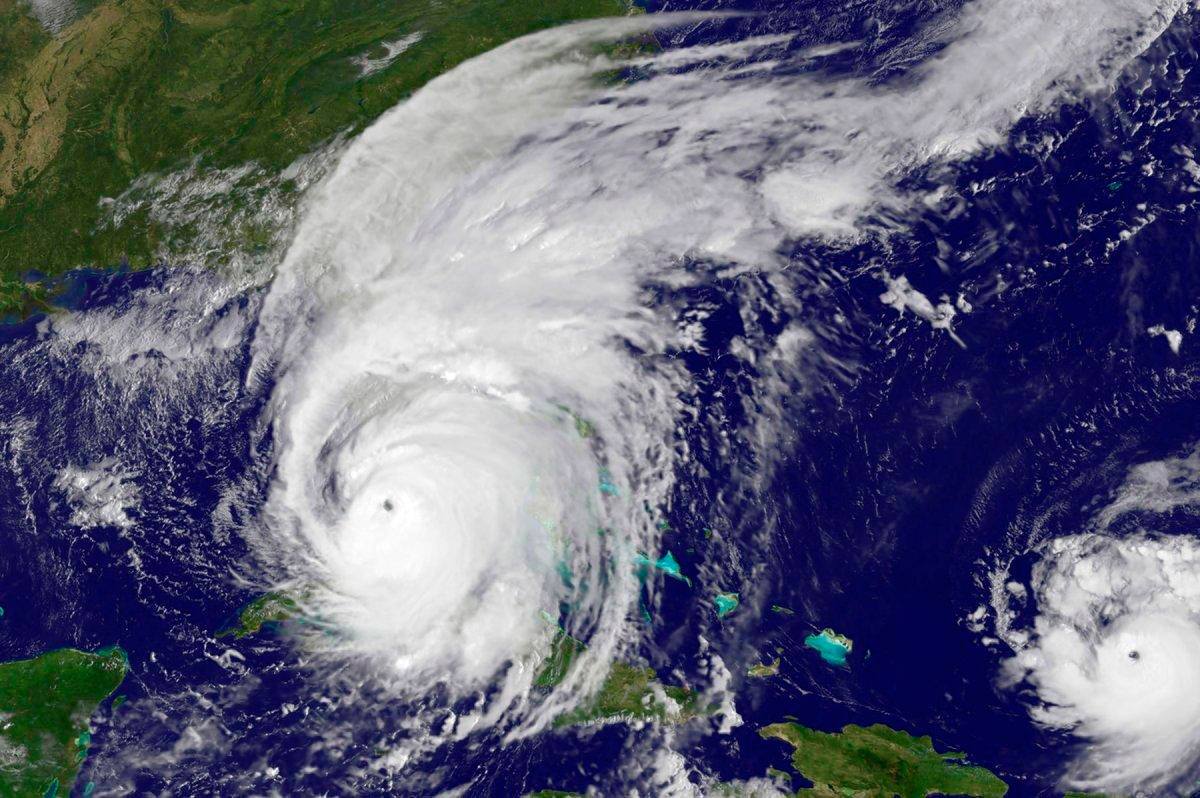In the autumn of 2017, Hurricane Irma, a 650-mile wide Category 5 storm, made landfall on the British Virgin Islands (BVI). In the early afternoon of 6 September, the storm’s eye travelled over Virgin Gorda, Tortola, and Jost Van Dyke, three of the major islands in the group. Irma’s direct hit left a devastated BVI, with four dead, hundreds left homeless, and more than 4,000 homes damaged or destroyed.
‘The hurricane destroyed buildings, homes, schools, vegetation, beaches, and basically everything in its path,’ recalls Vanessa King, managing partner at Tortola-based O’Neal Webster. ‘Winds roared, rain poured, and debris crashed making the whole event very frightening. While some people were able to evacuate, a majority remained and hunkered down.’
With winds reaching over 200mph, Ben Mays, litigation partner at Carey Olsen, was one of those who sought refuge with family and friends. ‘As the storm worsened we all gradually retreated to the most secure interior part of the building, which was a walk-in wardrobe. We spent the worst hours of the storm huddled in that wardrobe – five adults, three terrified children, and a dog crammed in each other’s laps. It was pitch black other than torch light, hot and humid, and water was being driven into the building at every angle, so we were two inches deep in water despite being on the first floor.
‘The noise of the hurricane passing over was indescribable, and the bigger gusts were accompanied by huge waves of pressure fluctuation which felt like dropping floors in an elevator. The whole fabric of the house was groaning and splintering around us, and there were occasional huge crashes as windows, doors, and bits of the roof gave way. Fortunately the roof did not fail completely. Others were not so lucky.’
‘Homes were ripped apart, vehicles and boats tossed around and dispersed, and the landscape erased of any vegetation,’ adds Jeffrey Kirk, managing partner of Appleby’s BVI office. ‘People feared for their lives as they were forced to find any shelter they could to protect themselves and their families. Power had been lost from earlier that day and all telecommunications went down around 11am rendering people cut off from each other locally and from their friends and families overseas.
The aftermath
In the storm’s immediate aftermath, the reality of the situation began to set in for those on the islands. The damage was far greater than anyone had anticipated: the entire telecoms network had been knocked out, making communication almost impossible; fallen trees, electricity poles, and various other debris made roads impassable; and then there was the loss of life and injury, some of which was not physical.
‘People managed the psychological impact of the storm in different ways, and some had harder times than others, but it had a significant impact on everyone,’ recalls Mays. ‘The 48 hours after the hurricane seem, in my memory, to be more like two weeks given the intensity of the situation, both mentally and physically. It was a minute to minute existence for the first couple of days. The following days and weeks were extremely challenging given the damage and the lack of basic amenities. We had no electricity and running water in our house for over three months.’
O’Neal Webster’s ‘Survivor Squad’ was deployed to clear debris from the firm’s destroyed Road Town offices. ‘A Category 5 hurricane is a traumatic event. Personally, I wasn’t prepared for the physical and psychological impact,’ says Naiyada Henry-Callwood, firm COO. ‘The aftermath was beyond exhausting.
‘Seeing the damage and destruction everywhere took a toll on our hearts and minds… the entire island grappled with insurmountable loss and banded together, BVI strong.
We could only hope, and work to recover what was just earlier that month our tranquil, natural, beautiful islands and communities.’
‘Our first concern was for our staff and their loved ones who did not evacuate,’ adds King. ‘It took a few days to account for all staff members as many were in areas that were inaccessible and had no communication. Fortunately, we were able to evacuate many staff members before Category 5 Maria hit a few days later and send our server out of the BVI. However, for those who stayed on the island, trying to find available space was a challenge, and still remains so.’
Kirk was one of those who relocated to the Cayman Islands. ‘Appleby rallied very quickly once we had confirmed all of our staff members were safe, and we had relocated most of our staff to other offices by the following week, ensuring firstly their personal safety and secondly that we were able to continue service to our clients.’
The long-term impact on the BVI is significant. Alongside the personal loss and devastation, damage estimates are as high as $2.3bn, the estimated public sector repair bill totals roughly $750m, tourism to the region has almost halved, and the general population of the territory has dropped by around 11%. Considering the BVI has fewer than 30,000 residents, those are some large mountains of recovery to climb.
The hurricane has already led to substantial changes in BVI legislation and the government’s approach to disaster planning. Most notable is the passing of the Virgin Islands Recovery and Development Agency Act in 2018, which proposes a review and update of the BVI building codes, and led to the establishment of the Recovery and Development Agency, which will lead the recovery and redevelopment of the BVI’s key infrastructure. But what about law firms; what lessons have they learned?
Preparing for the worst
Whether the threat is from hurricanes, earthquakes, tsunamis, or wildfires, many law firms across the world have business continuity and disaster recovery strategies in place to mitigate against the loss of a natural disaster.
However, even a well-thought-out plan can go out the window when disaster strikes.
‘I think anyone who says they were prepared for the scale of this disaster is lying,’ offers Mays. ‘It was really impossible to fully appreciate the difficulties a disaster like this creates, until they actually happen, and in this day and age to be completely unable to communicate with people who are only several miles away from you is an extraordinary experience.’
Unlike others in the BVI, Carey Olsen’s premises avoided catastrophic damage. ‘There were a few days where we were spinning the plates like mad trying to maintain normal service, despite the mayhem, but once we managed to airlift most of our staff out to the Cayman Islands and elsewhere, we were able to work pretty much as normal,’ says Mays. ‘For firms like ours with an international presence it was also easier because we have BVI lawyers in other offices who were able to plug gaps in the short term.’
‘Preparing for a hurricane is difficult, particularly because you don’t know exactly when and where it will hit and at what intensity,’ adds King. ‘Everything can change quickly, as it did in Irma, making preparing for a Category 5 storm nearly impossible.’
For O’Neal Webster, pre-hurricane preparations began the weekend before the hurricane was predicted to make landfall, with partners clearing desks and ensuring all important documents had been placed in fire and waterproof safes. Many staff were evacuated in advance to allow for work to continue with as little downtime as possible, and the firm set up a WhatsApp group allowing staff to remain in contact during and after the hurricanes hit. The firm also benefitted from its previous move to a paperless system, a project initially enacted to reduce its carbon footprint.
At Appleby, key staff in other Caribbean and international offices were tracking the storm and were prepared to trigger the firm’s evacuation procedures if and when necessary, and all fee earners were provided with equipment to connect remotely to the firm’s systems.
Appleby’s disaster plan tries to consider all possible eventualities and stresses the importance of communicating regularly to staff. The firm has also now introduced additional procedures including utilising GPS tracking to locate staff post-disaster. Both Appleby and Carey Olsen have also increased numbers of satellite phones on offer so that staff can communicate more easily.
The main takeaways for all firms, however, is that communication is key and that you must have a plan in place mitigating business disruption to clients. ‘The key to achieving this successfully is ensuring that everyone knows what role they play in achieving that, in particular having very clear lines of responsibility and communication,’ says Mays.
‘For example, you obviously need one or more people on the ground dealing with the first issue, whereas the second will often be better managed from another location not experiencing the direct impact of the event. Our response to Hurricane Irma had me leading the remaining team locally on the first point, with a business continuity committee in our Jersey and Guernsey offices leading on the wider business continuity front.’
The devastation of a natural disaster can be felt long after the winds have subsided and the waters retreated, but, as with everything, it is how people and businesses respond that informs how communities will recover. The BVI’s efforts to rebuild are still in full force and cruise-based tourism is starting to return to the islands, though a lot remains to be done. But despite the threat of future storms, BVI-based lawyers are going nowhere.
‘Natural disasters are a reality for law firms operating in many regions around the world,’ adds Kirk. ‘These disasters should not and will not deter firms operating in these areas.’ In relation to the BVI, Mays adds: ‘The Recovery and Development Agency’s tagline is ‘Smarter, Greener, Better’ so the aim is very much to make the BVI more resilient, and to use the recovery as an opportunity to develop more sustainably and be better equipped to deal with any future hurricanes.’


